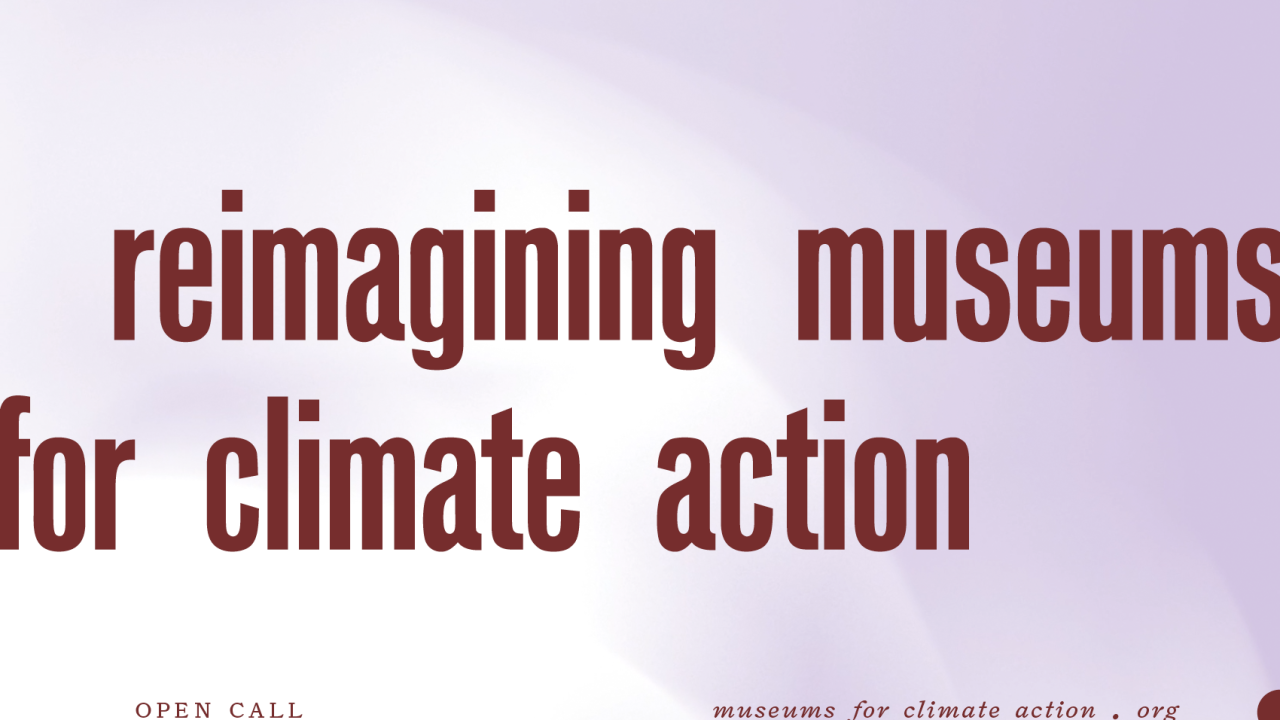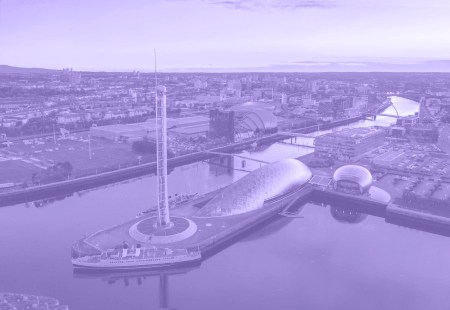
Editor’s note: Right now global attention is focused on the COVID-19 pandemic and protests around the world ignited by the murder of George Floyd (one of the latest in a long string of deaths linked to police violence in the US). Given the importance of these events, you may find yourself tuning out news related to climate change—a global disruption unfolding at a somewhat slower pace. However, it is worth recognizing that these issues are inter-related: climate change and the pandemic disproportionately damage communities of color; loss of habitat contributes to the rise of new pandemic diseases; and the creation of a more just and equitable society would make the US more resilient in the face of both environmental and health challenges.
In today’s guest post, Colin Sterling and Rodney Harrison of University College London Institute of Archaeology tell us about a design competition that explores how museums can help society transition to a low carbon future, adapt to climate change, and safeguard the world’s ecosystems.
– Elizabeth Merritt, VP Strategic Foresight and Founding Director, Center for the Future of Museums, American Alliance of Museums
***
For the last five years, we have been researching new perspectives on museums and heritage in times of rapid environmental change. Through the Heritage Futures project and the AHRC Heritage Priority Area, we have sought to understand how museums and other heritage practices shape future ecological legacies across more-than-human worlds. The intersecting problems of climate change and the Anthropocene have prompted us to think differently about core concepts of inheritance, care, conservation and stewardship, and to push forward alternative forms of collecting, preservation and interpretation. When the UK was announced as host of COP26 (the 2021 UN Climate Change Conference), we decided to create an international design competition that would bring these questions to a wider public and – hopefully – impact on policymaking at the highest level.
The United Nations Framework Convention on Climate Change (UNFCCC) was adopted by the world’s governments almost thirty years ago, in May 1992. The main objective of the UNFCCC remains the “stabilization of greenhouse gas concentrations in the atmosphere at a level that would prevent dangerous anthropogenic interference with the climate system.” So far, governments have failed to fulfill their obligations to meet this goal. More than half the total amount of carbon added to the atmosphere since the start of the Industrial Revolution has been emitted over the past three decades. As a result, we now face an increasingly destabilized climate system. If the next thirty years are to be any different, rapid transformative action is required across all areas of social, economic, cultural, and political life. As David Wallace-Wells puts it in The Uninhabitable Earth, societies globally now face an urgent task: “preserving our collective future, forestalling devastation, and engineering an alternate path.”
What role might museums play in making this alternative future a reality? How can they become catalysts for meaningful climate action? To what extent are museums able, or willing, to confront the knotted problems of climate change, inequality, and social justice? How will they have to evolve to do so?
In May 2020 we launched an international design and ideas competition to explore these questions. The competition will lead to an exhibition at Glasgow Science Centre ahead of and during COP26 – the annual gathering of UNFCCC signatories, together with their scientific and technical advisory bodies, and representatives of stakeholder groups. They meet to monitor progress and agree on what further actions are needed to address the Convention’s key goals.
In the context of the UNFCCC, climate action takes many different forms. At one level it is about reducing greenhouse gas emissions to lessen the magnitude of future climate change, termed climate mitigation. At the same time, it is about strengthening resilience to current and projected impacts of climate change, termed climate adaptation. A further aim focuses on education, participation, awareness-raising and building capacity across various state and non-state actors. The competition and exhibition will explore the different ways in which museums can contribute to each of these dimensions and more. While the problem of climate change is far larger than any single museum – or indeed the sector as a whole – it is our contention that museums have a vital role to play in helping societies globally shape more just and sustainable futures.
In 2015 the UNFCCC adopted the Paris Agreement, which commits signatories to limit global warming to two degrees above pre-industrial levels. Five years later we are already past one degree, and heading in the wrong direction. In the same year, the UN also launched the seventeen Sustainable Development Goals (SDG). These recognise the interconnectedness of the world’s major social and environmental problems, and the need to address them together. The climate emergency falls under SDG13: ‘take urgent action to combat climate change and its impacts.’
As Henry McGhie of Curating Tomorrow has noted, the original Framework Convention, the Paris Agreement, and the SDGs all recognise the important role different sectors can play in climate action. The UNFCCC and Paris Agreement both specify the importance of public education, training of staff, public awareness campaigns, public participation in climate decision making, access to information relating to science and policy regarding climate change, and international co-operation. These six areas are known informally as Action for Climate Empowerment, or ACE. As a UN convention, responsibility for ACE fell to governments, and they have mostly fallen short. However, non-state actors can take up these ambitions in their work, and some are already doing so. Many museums are engaged in such initiatives, but much more can be done to push forward climate action at various scales, enabling museums and society to move farther, faster, together to a zero-carbon future.
While these areas of practical, immediate action are vitally important, we also want the competition to think beyond the limitations of current systems and ways of working. In this sense, we are interested in how ‘speculative design’ might open up new perspectives on the ‘wicked problem’ of climate change. Following designers Anthony Dunne and Fiona Raby, we use the idea of speculative design to explore possible museum futures as “tools to better understand the present and to discuss the kind of future people want.” Crucially, this process is best seen as collaborative, with various disciplines and voices coming together to “generate futures that act as catalysts for public debate and discussion.” To this end, the competition and exhibition will provide resources, ideas and inspiration for museum professionals, policymakers, and the wider public to think differently about the role of museums in times of change and uncertainty.
While recent years have witnessed a significant mobilization of the museum sector to address climate change, transformative action can only occur across disciplines and across agendas; breaking the silos between them, and rethinking the structures that maintain the status quo. To borrow from philosopher Rosi Braidotti (and in light of current convulsions across the US and around the world), we believe it is crucial to see the interconnections between “the greenhouse effect, the status of women, racism and xenophobia, and frantic consumerism. We must not stop at any fragmented portions of these realities, but rather trace transversal interconnections among them.” In light of this, the competition specifically invites proposals from diverse voices and perspectives, including museum professionals, architects, designers, activists, poets, community groups, Indigenous groups, and the general public at large. Radical new ideas can only come from conversations that recognise museums never exist in a vacuum. Like climate change, museums are deeply entangled with wider challenges around racial justice, planetary health, decolonization, and environmental degradation. How might new forms of museum architecture, design, and experience address these interconnections to prompt meaningful climate action?
Here we must acknowledge that museums are closely bound up with many of the processes that have led the planet to the brink of ecological collapse: the separation of human and non-human life; the marginalization and oppression of Indigenous peoples; the celebration of progress narratives dependent on unlimited economic growth. Recent years have witnessed a profound shift in the way museums engage with such legacies, but the underlying logics of preservation, interpretation, curating, education, and research remain largely unchallenged. This competition aims to revisit these foundational principles in imaginative, generative, and restorative ways to inspire new approaches to climate justice and green futures across the museum sector and beyond.
Reimagining Museums for Climate Action is a design competition linked to COP26, which asks designers, architects, academics, artists, poets, philosophers, museum professionals and the public at large to radically (re)imagine and (re)design the museum to help bring about more equitable and sustainable futures in the climate change era. The competition aims to explore how museums can help society transform to a low carbon future, adapt to the impacts of climate change, and safeguard ecosystems. The competition is free to enter and open to anyone over the age of 18. Submissions can be made by individuals or small teams. The registration deadline is July 31, 2020, and the submission deadline is September 15, 2020. Eight finalists (individuals or teams) will be invited to develop their proposals for display at the Glasgow Science Centre in 2021.
The competition has been developed by the UK Arts and Humanities Research Council (AHRC) Heritage Priority Area, led by Professor Rodney Harrison (UCL Institute of Archaeology) in partnership with Colin Sterling (AHRC Research Fellow, UCL IoA), Henry McGhie (Curating Tomorrow), and Emma Woodham (Glasgow Science Centre). It launched on the 18th of May 2020 for International Museum Day.
Learn more at about the competition and how to enter at:
www.museumsforclimateaction.org
And follow this work on Twitter:
@climatemuseums
@AhrcHeritage









